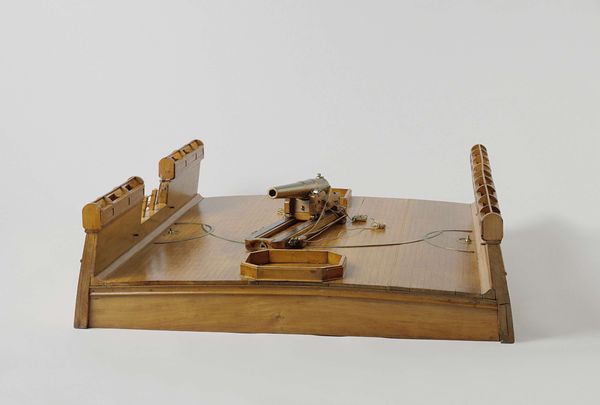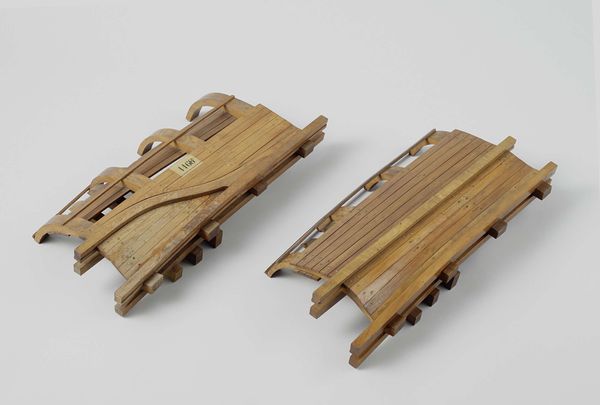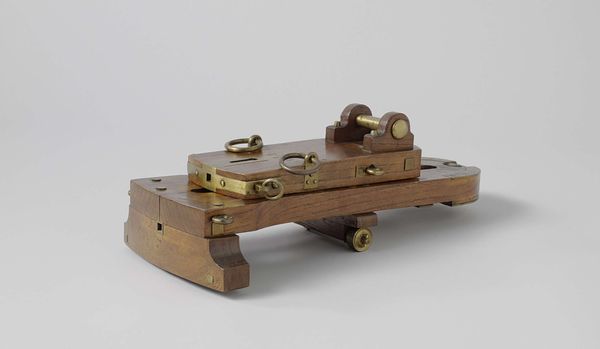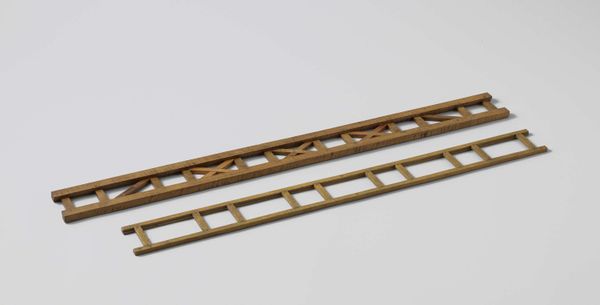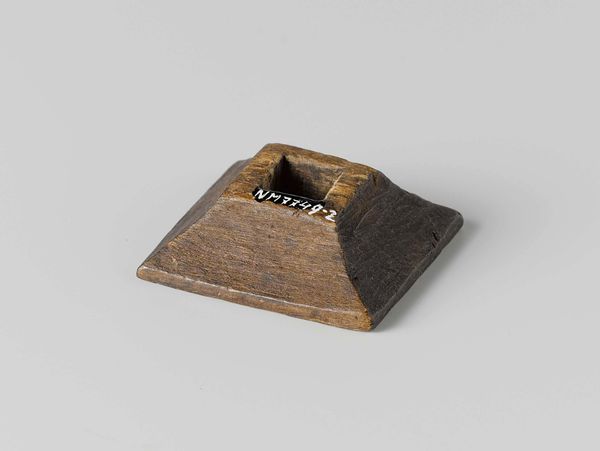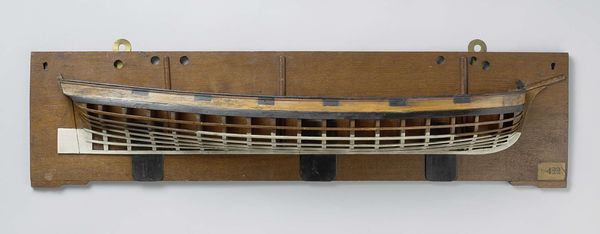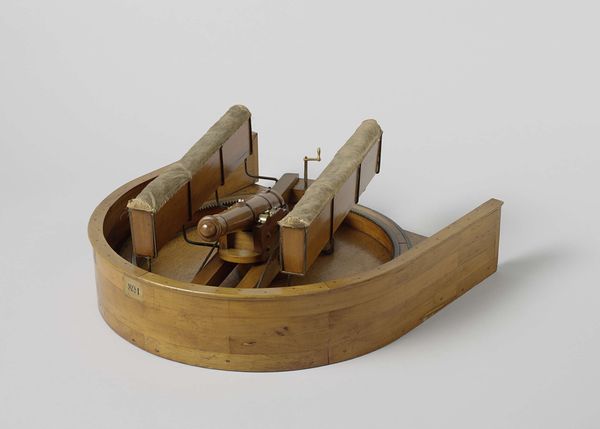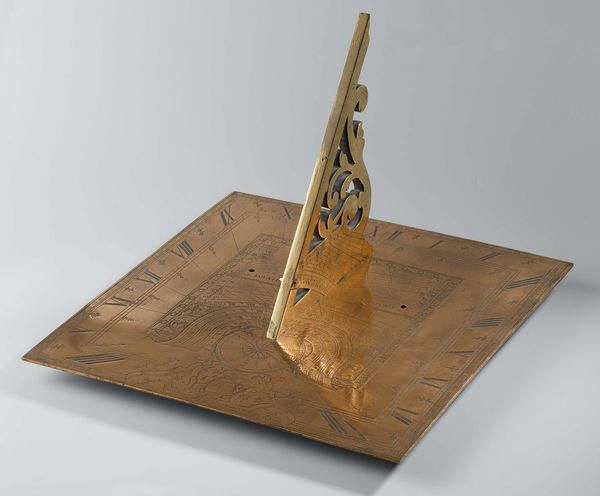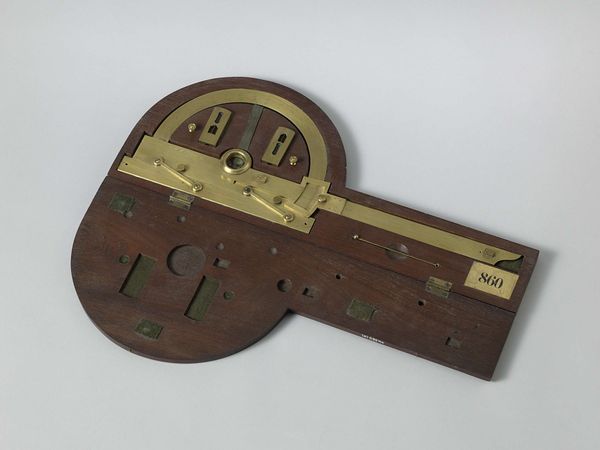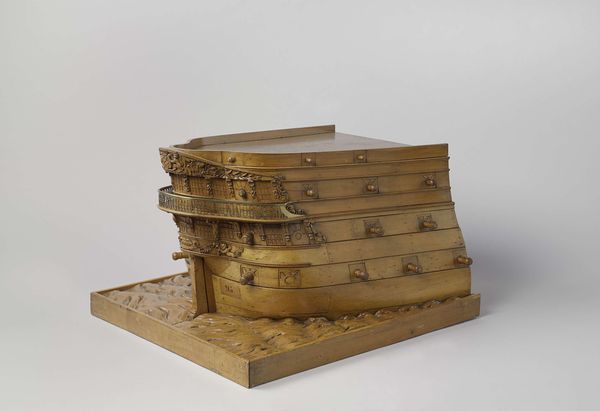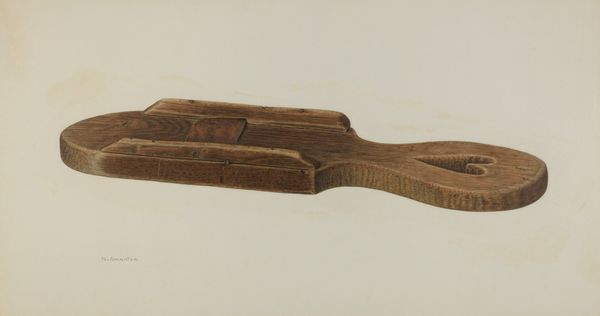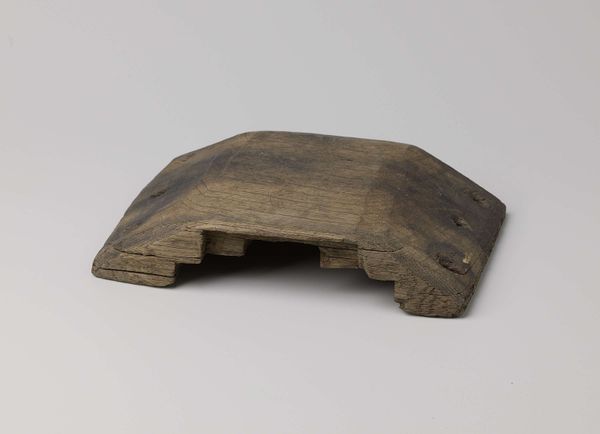
sculpture, wood
#
still-life-photography
#
geometric
#
sculpture
#
wood
#
product photography
Dimensions: height 8.7 cm, width 30.8 cm, depth 31 cm
Copyright: Rijks Museum: Open Domain
Curator: This is a wood sculpture, dating to about 1834, titled "Model of a 20-cm Mortar on a Pivot". Editor: My first thought is, if geometry had a soul, it might look like this. The muted browns and beiges give it such an antiquated and melancholic feel, as if it is whispering secrets from the past. Curator: Precisely. It is from the Rijkswerf Rotterdam collection and represents the meticulous detail involved in naval engineering during that era. I can't help thinking how important geometry was to both creating and using this object, with its careful calculations and angles for determining trajectory. Editor: And what implications might that geometry have? As we admire this relic, we might consider that what appears as abstract design here translates into the very real trajectories of artillery—art and mathematics meeting militarization and global power structures. Curator: Absolutely. It speaks volumes about precision and control. Mortars needed that fine-tuning; any deviation could have significant repercussions. In many ways it reflects a mindset as much as a machine. I can't help wondering who it was that sat down to carefully construct this miniature object. Editor: Yes, the 'who' matters. Was it a member of the elite or someone lower down? As such, does it symbolize a period dominated by naval conflict or also one with burgeoning scientific curiosity? I think the choice to create the design in wood shows that there were complex negotiations happening in terms of national priorities and resource management. Curator: Perhaps. Its existence makes you consider the power dynamics and technological advancements of that time. I keep wanting to touch it. To know what the wood feels like and where it might have sat for almost two centuries. Editor: Well, here it is—a silent, stoic object asking piercing questions of the current one. We need to remain alert in how we read its symbolism and impact in history, as much as admire the skill with which it was created. Curator: It's certainly more than a historical artifact. To me, it serves as a contemplative portal, blending art, technology, and perhaps a tiny dose of wistful imagining for times gone by.
Comments
No comments
Be the first to comment and join the conversation on the ultimate creative platform.
